
How to Use Humidity and Temperature Sensor (RHT03): Examples, Pinouts, and Specs
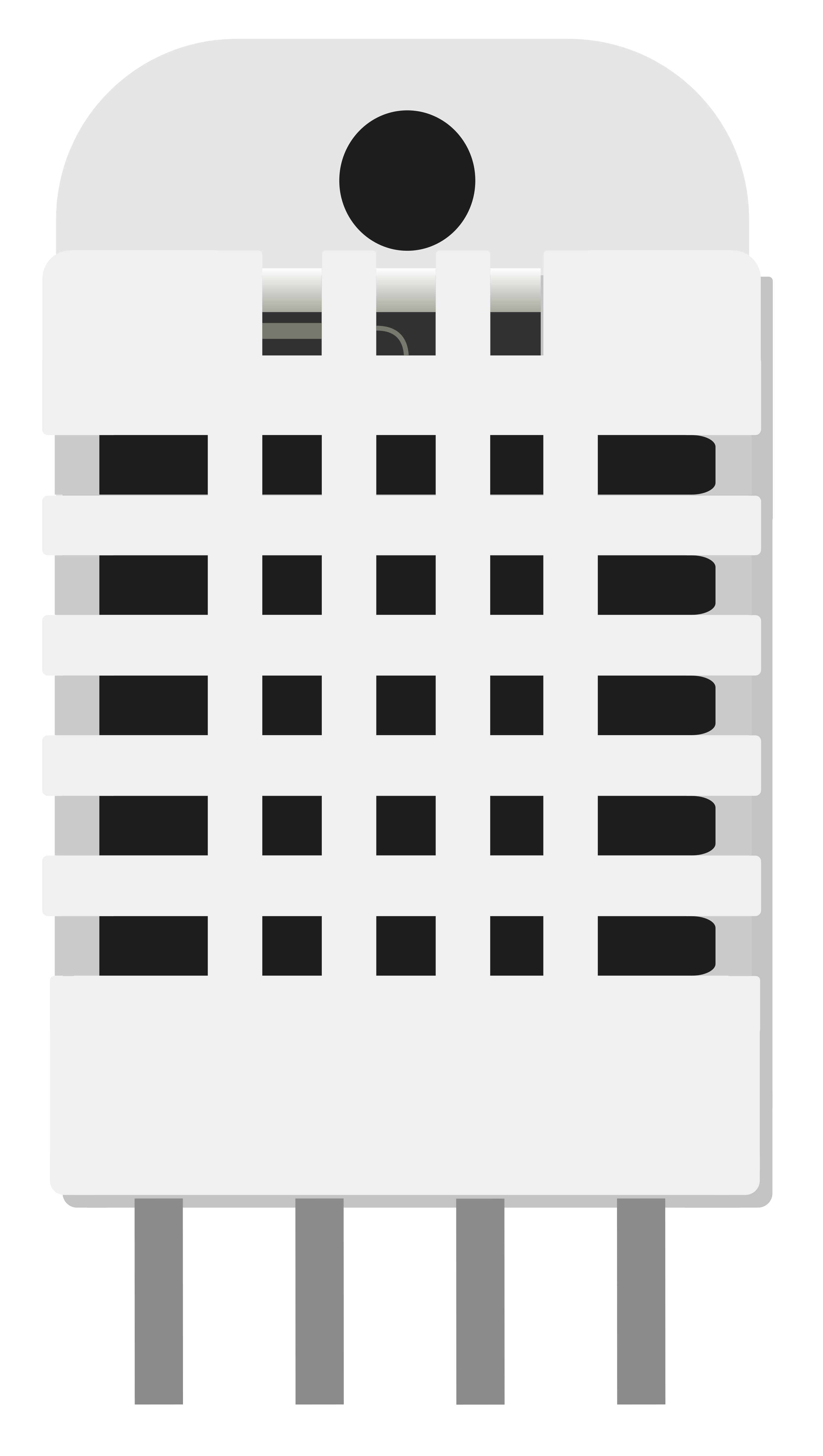
 Design with Humidity and Temperature Sensor (RHT03) in Cirkit Designer
Design with Humidity and Temperature Sensor (RHT03) in Cirkit DesignerIntroduction
The RHT03 sensor, also known as the DHT22, is a digital temperature and humidity sensor that provides reliable and accurate readings. It is widely used in applications such as environmental monitoring, weather stations, home automation, and HVAC systems due to its ease of use and low cost.
Explore Projects Built with Humidity and Temperature Sensor (RHT03)
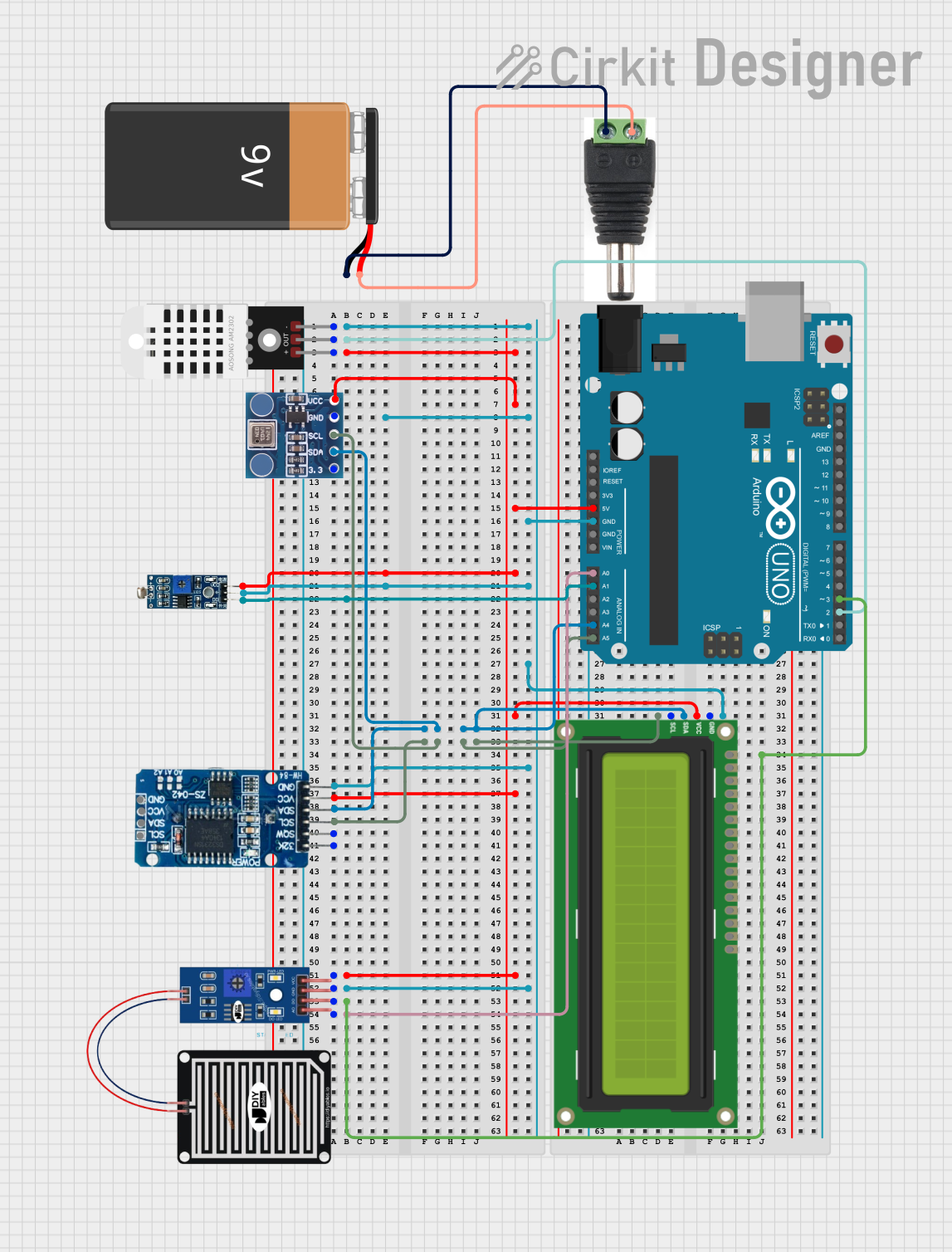
 Open Project in Cirkit Designer
Open Project in Cirkit Designer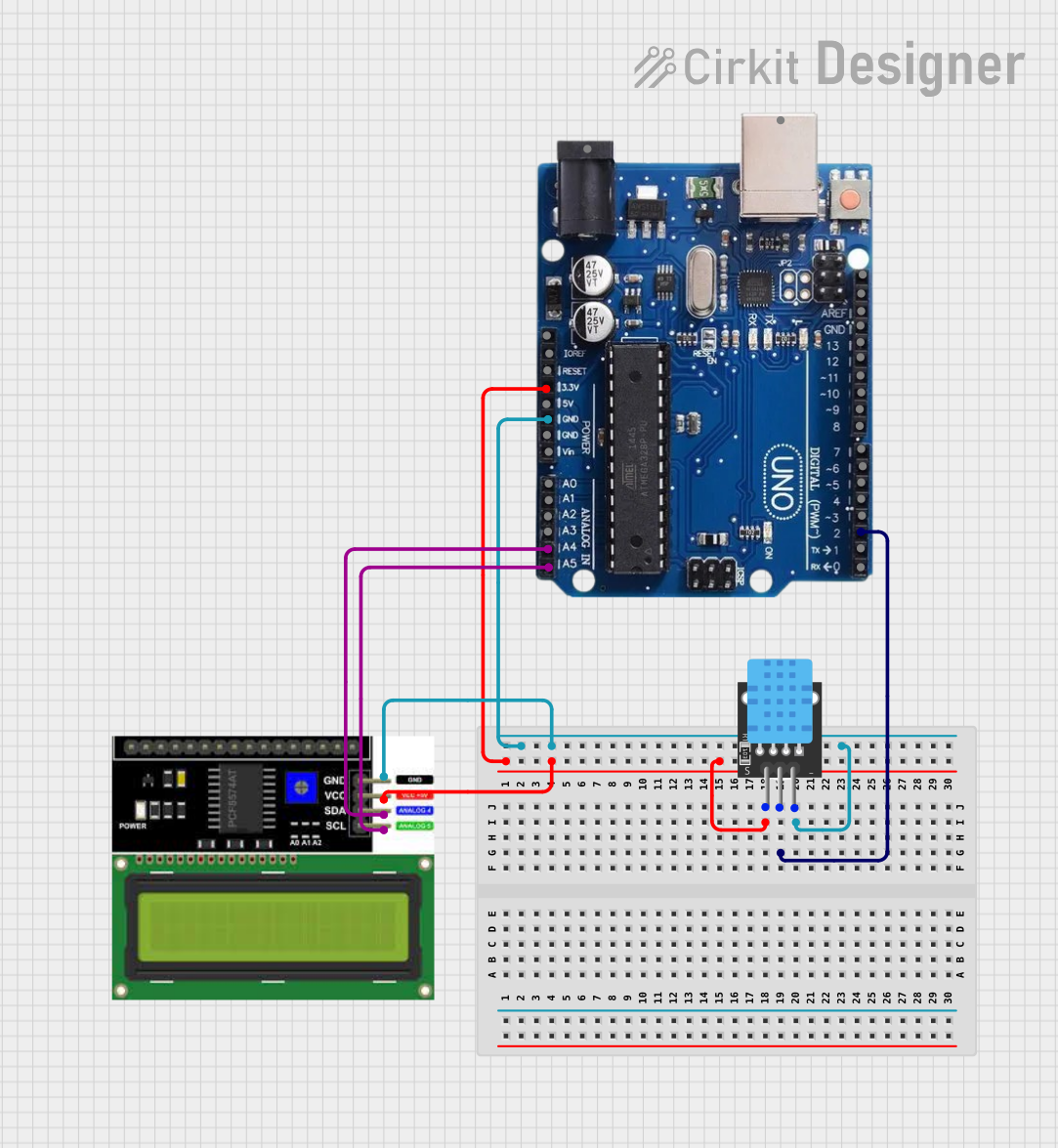
 Open Project in Cirkit Designer
Open Project in Cirkit Designer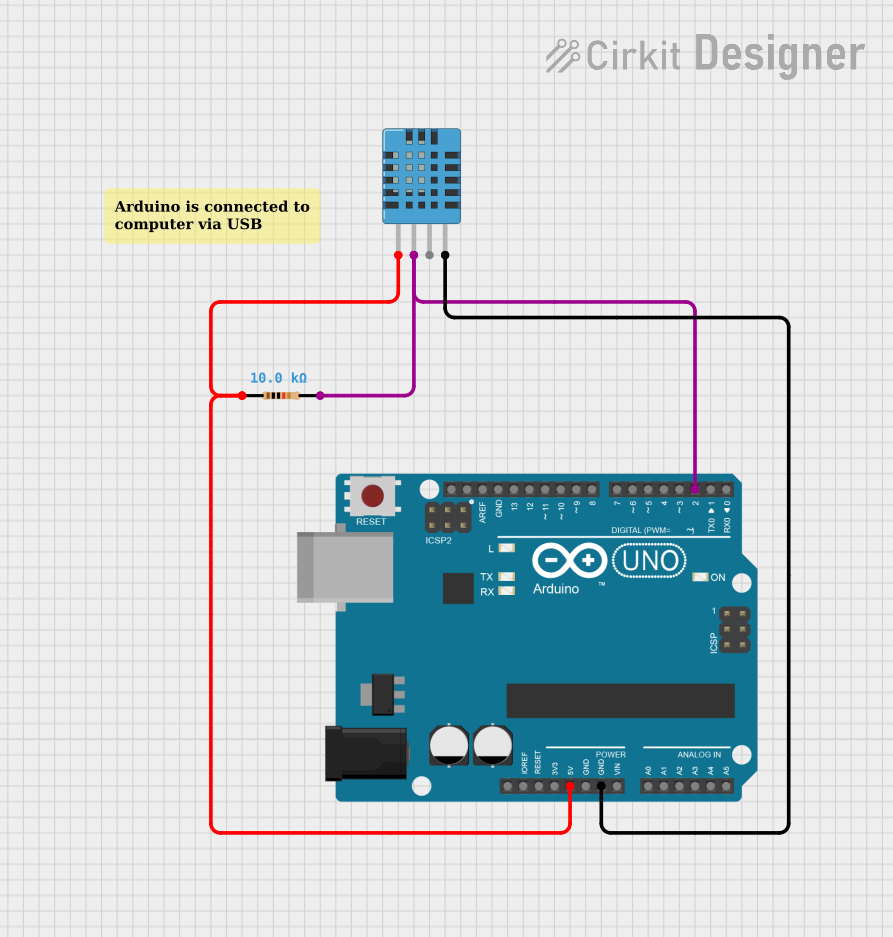
 Open Project in Cirkit Designer
Open Project in Cirkit Designer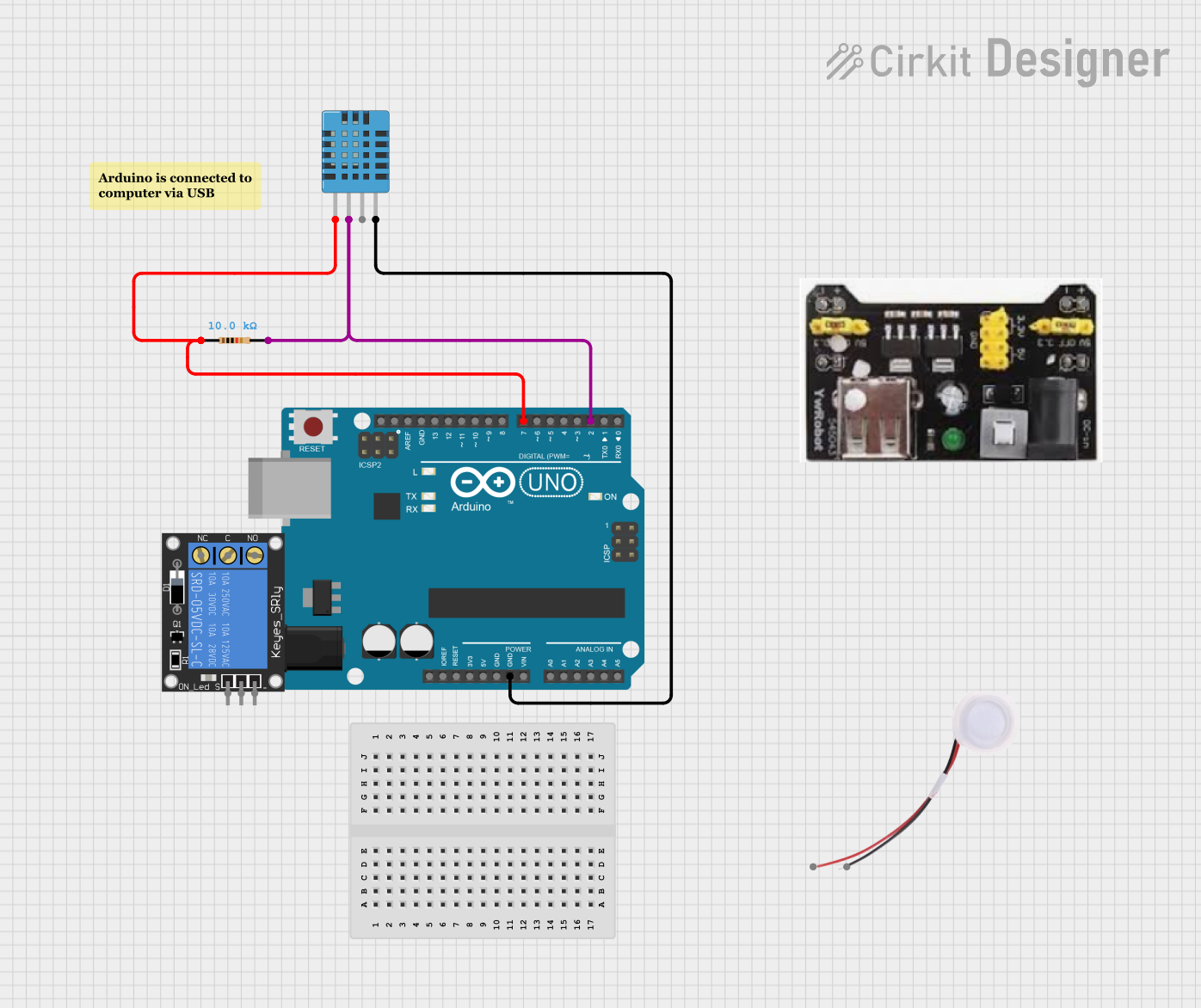
 Open Project in Cirkit Designer
Open Project in Cirkit DesignerExplore Projects Built with Humidity and Temperature Sensor (RHT03)

 Open Project in Cirkit Designer
Open Project in Cirkit Designer
 Open Project in Cirkit Designer
Open Project in Cirkit Designer
 Open Project in Cirkit Designer
Open Project in Cirkit Designer
 Open Project in Cirkit Designer
Open Project in Cirkit DesignerTechnical Specifications
Key Technical Details
- Humidity Measurement Range: 0-100% RH
- Humidity Measurement Accuracy: ±2% RH
- Temperature Measurement Range: -40 to 80°C (-40 to 176°F)
- Temperature Measurement Accuracy: ±0.5°C (±0.9°F)
- Operating Voltage: 3.3 to 6V DC
- Max Current: 2.5mA during data conversion (when data is requested)
- Sampling Rate: No more than 1 Hz (once every second)
- Interface Type: Digital
Pin Configuration and Descriptions
| Pin Number | Name | Description |
|---|---|---|
| 1 | VDD | Power supply (3.3 to 6V DC) |
| 2 | DATA | Digital data output |
| 3 | NC | Not connected |
| 4 | GND | Ground |
Usage Instructions
Integration with a Circuit
- Connect the VDD pin to a 3.3V or 5V power supply.
- Connect the GND pin to the ground of the power supply.
- Connect the DATA pin to a digital input pin on your microcontroller, such as an Arduino UNO.
- It is recommended to use a 5.1kΩ pull-up resistor between the DATA pin and VDD for reliable communication.
Best Practices
- Avoid placing the sensor in direct sunlight or near heat sources to prevent inaccurate readings.
- Ensure the sensor is not exposed to condensing humidity levels.
- Allow the sensor to acclimatize to the environment for accurate readings.
- Use the sensor within its specified temperature and humidity range.
Example Code for Arduino UNO
#include "DHT.h"
#define DHTPIN 2 // Digital pin connected to the DHT sensor
#define DHTTYPE DHT22 // DHT 22 (RHT03)
DHT dht(DHTPIN, DHTTYPE);
void setup() {
Serial.begin(9600);
dht.begin();
}
void loop() {
// Wait a few seconds between measurements.
delay(2000);
// Reading temperature or humidity takes about 250 milliseconds!
float humidity = dht.readHumidity();
// Read temperature as Celsius (the default)
float temperature = dht.readTemperature();
// Check if any reads failed and exit early (to try again).
if (isnan(humidity) || isnan(temperature)) {
Serial.println("Failed to read from DHT sensor!");
return;
}
// Compute heat index in Celsius (isFahrenheit = false)
float heatIndex = dht.computeHeatIndex(temperature, humidity, false);
Serial.print("Humidity: ");
Serial.print(humidity);
Serial.print("% Temperature: ");
Serial.print(temperature);
Serial.print("°C Heat index: ");
Serial.print(heatIndex);
Serial.println("°C");
}
Troubleshooting and FAQs
Common Issues
- Inaccurate Readings: Ensure the sensor is not placed near heat sources or in direct sunlight. Allow it to acclimatize to the environment.
- No Data: Check the wiring, especially the DATA pin connection. Ensure the pull-up resistor is in place.
- Erratic Readings: Ensure the power supply is stable and falls within the specified voltage range.
FAQs
Q: How often can I request data from the RHT03? A: The RHT03 should not be read more frequently than once every two seconds to ensure accurate measurements.
Q: Can the RHT03 be used outdoors? A: Yes, but it should be protected from direct sunlight and water.
Q: What should I do if the sensor is not responding? A: Double-check the wiring, ensure the correct resistor is in place, and that the power supply is within the specified range. If the issue persists, the sensor may be defective.
For further assistance, please refer to the manufacturer's datasheet and resources.